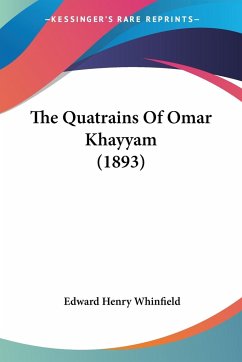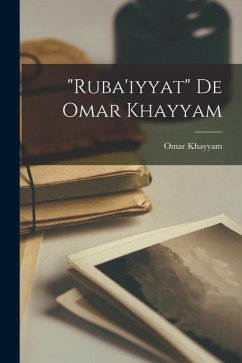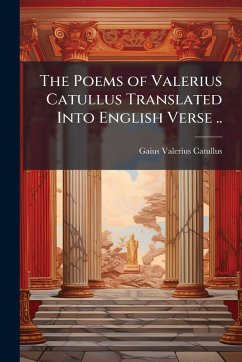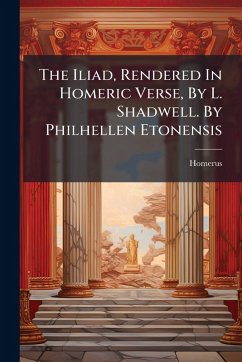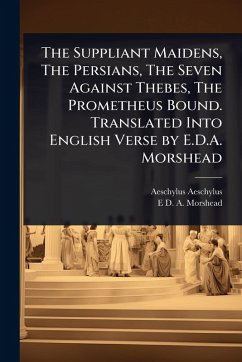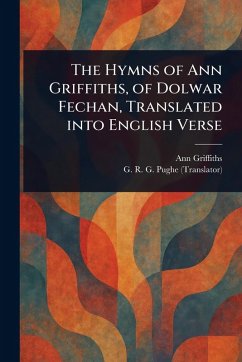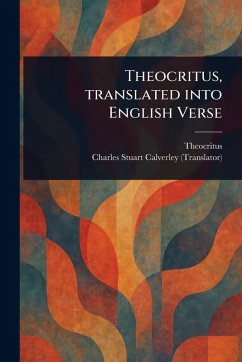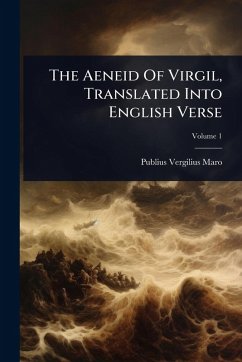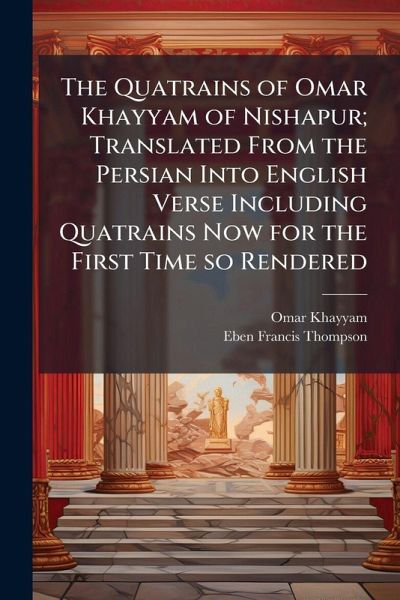
The Quatrains of Omar Khayyam of Nishapur; Translated From the Persian Into English Verse Including Quatrains Now for the First Time so Rendered
Versandkostenfrei!
Versandfertig in über 4 Wochen
22,99 €
inkl. MwSt.
Weitere Ausgaben:

PAYBACK Punkte
11 °P sammeln!
This edition presents a collection of "The Quatrains of Omar Khayyam of Nishapur" translated from the Persian into English verse. It includes quatrains rendered into English for the first time. Omar Khayyam, the renowned Persian polymath, is celebrated for his profound and contemplative verses that explore themes of life, death, fate, and the ephemeral nature of existence. This translation seeks to capture the essence and beauty of Khayyam's original work, offering readers a glimpse into the rich literary and philosophical traditions of Persia. The quatrains offer enduring wisdom and continue ...
This edition presents a collection of "The Quatrains of Omar Khayyam of Nishapur" translated from the Persian into English verse. It includes quatrains rendered into English for the first time. Omar Khayyam, the renowned Persian polymath, is celebrated for his profound and contemplative verses that explore themes of life, death, fate, and the ephemeral nature of existence. This translation seeks to capture the essence and beauty of Khayyam's original work, offering readers a glimpse into the rich literary and philosophical traditions of Persia. The quatrains offer enduring wisdom and continue to resonate with readers seeking deeper meaning in the human experience. This work has been selected by scholars as being culturally important, and is part of the knowledge base of civilization as we know it. This work was reproduced from the original artifact, and remains as true to the original work as possible. Therefore, you will see the original copyright references, library stamps (as most of these works have been housed in our most important libraries around the world), and other notations in the work. This work is in the public domain in the United States of America, and possibly other nations. Within the United States, you may freely copy and distribute this work, as no entity (individual or corporate) has a copyright on the body of the work. As a reproduction of a historical artifact, this work may contain missing or blurred pages, poor pictures, errant marks, etc. Scholars believe, and we concur, that this work is important enough to be preserved, reproduced, and made generally available to the public. We appreciate your support of the preservation process, and thank you for being an important part of keeping this knowledge alive and relevant.



